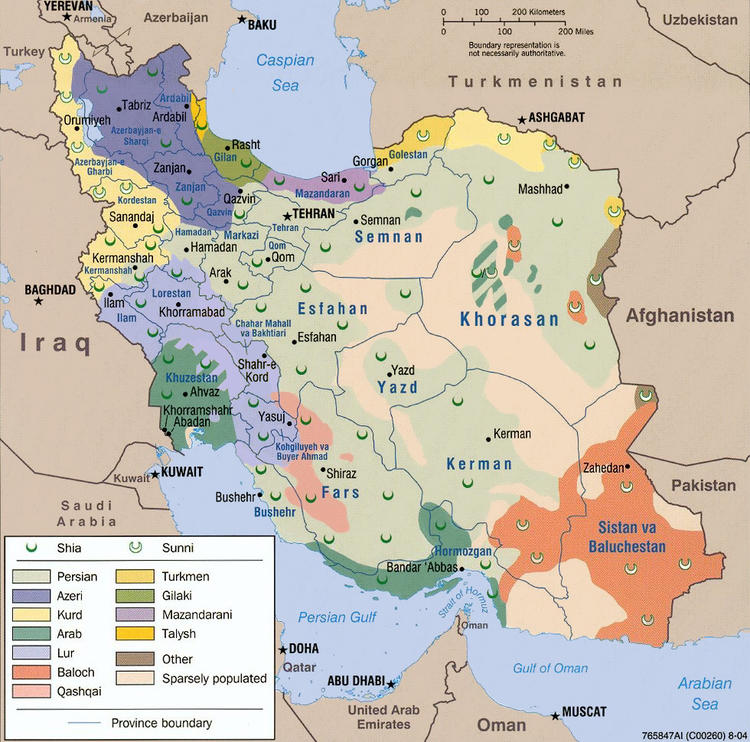There is no way to compare the devastating consequences of the U.S. invasion of Iraq in 2003, but a war of choice with Iran would represent something on an even larger scale
by

White House National Security Advisor John Bolton (L) and Vice President Mike Pence listen to President Donald Trump announce his decision to withdraw the United States from the 2015 Iran nuclear deal in the Diplomatic Room at the White House May 8, 2018 in Washington, DC. After two and a half years of negotiations, Iran agreed in 2015 to end its nuclear program in exchange for Western countries, including the United States, lifting decades of economic sanctions. Since then international inspectors have not found any violations of the terms by Iran. (Photo: Chip Somodevilla/Getty Images)
1. Iraq is 168,754 mi² and Iran is 636,400 mi²; that is, Iran is geographically 3.77 times bigger than Iraq, almost 4 times as big.

2. Iraq’s population when invaded was 26 million. Iran’s population today is 81 million.
3. General Eric Shinseki testified before Congress prior to Bush’s invasion that based on the US military’s experience in the Balkans, 800,000 troops would be needed to provide security to Iraq. Secretary of Defense Donald Rumsfeld insisted on 100,000 troops, wrongly believing he could pull them out in 6 months. Bush’s viceroy in Iraq, Paul Bremer, later admitted that “we never had enough troops” in Iraq.
4. Since Iran is 3 times as populous as Iraq, by Shinseki’s correct calculation, the US would need 2.4 million troops to occupy Iran.
5. The US total military personnel count is about 2,141,900, of whom 1, 281,900 are active duty and the rest reservists.
6. Iraq’s army was a conventional military force with four powerful tank divisions, which the US Air Force turned to black carbon dust. The US only ran into trouble when Iraqis opposed to the invasion turned to guerrilla tactics, which the US never was able to deal with effectively.
7. Iran can already mobilize at least 1.5 million paramilitary “Basij” forces for guerrilla warfare. This is in addition to over 500,000 active duty military personnel.
8. Iraq was largely ruled by a small Sunni minority of perhaps 17% of the population. Iran is ruled by the Shiite majority that makes up 90% of the population. That Iraq had a minority government allowed the Bush administration to make friends in the majority Shiite community by putting them in power. This step alienated and angered the Sunnis, but they were a minority and so could not do much about it. In Iran, the Shiite majority would mount a massive struggle against the US invaders.
9. Bush found international allies for his war on Iraq, including Britain and Spain. No one in Western Europe would join Trump in a war with Iran, making the US isolated and causing it to look like a unilateralist bully.
10. Whereas Iraq’s neighbors—Turkey, Iran and Saudi Arabia in particular—had been mauled by Saddam and so did not strongly oppose Bush’s invasion, Shiite Iraqis, many Syrians, the Hazaras of Afghanistan, and the some 40 million Shiites of Pakistan would support Iran.

No comments:
Post a Comment